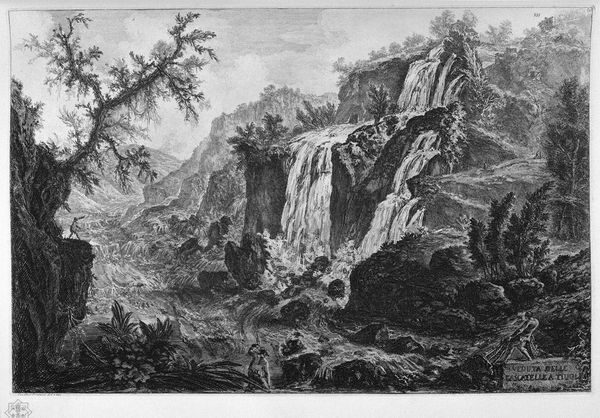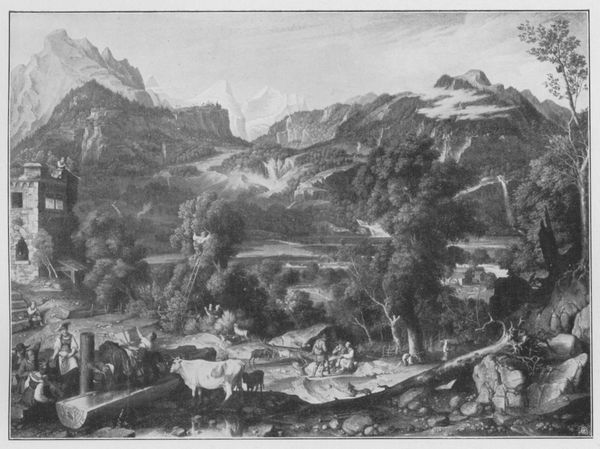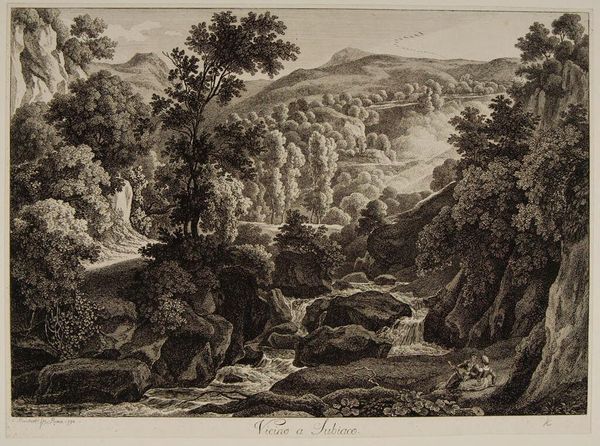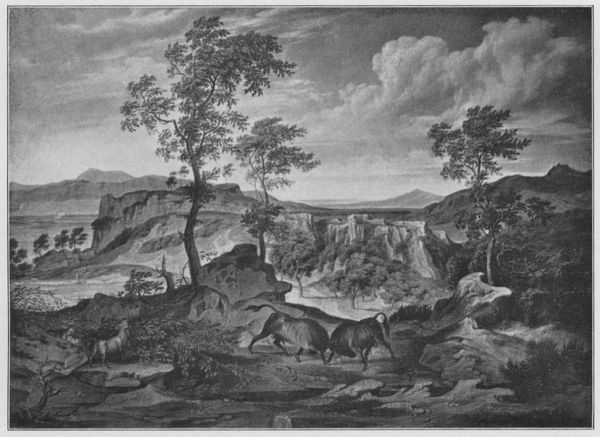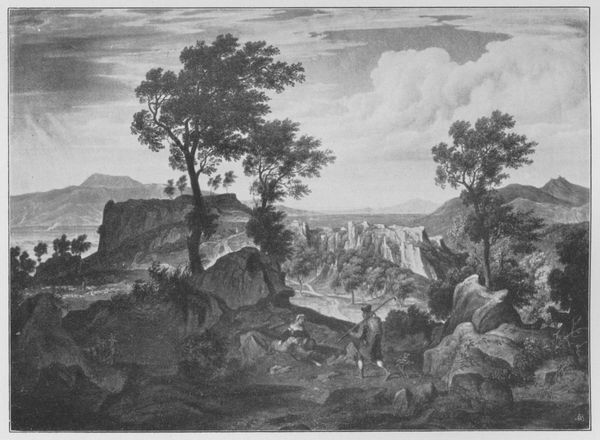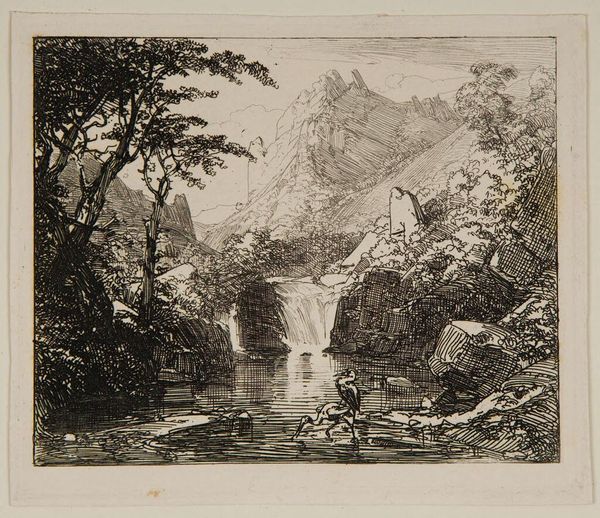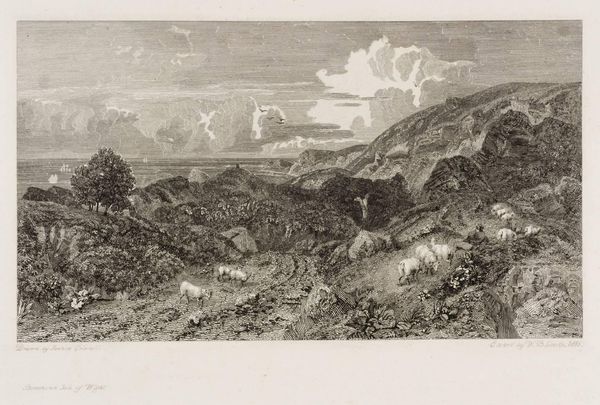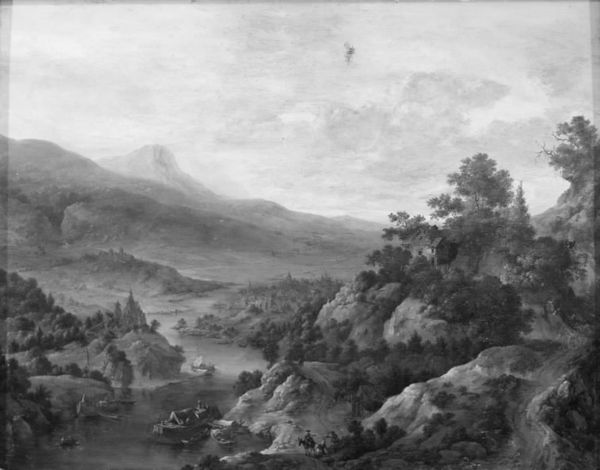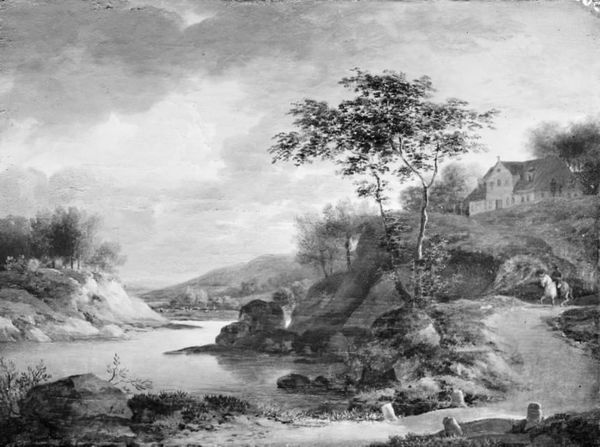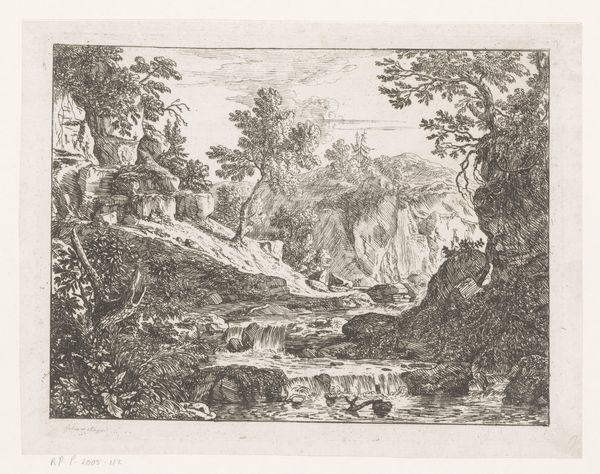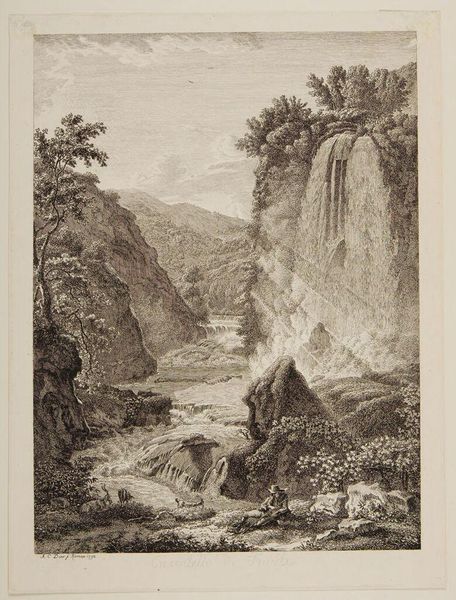
drawing, print, etching
#
drawing
#
baroque
# print
#
etching
#
landscape
#
romanticism
#
italian-renaissance
#
monochrome
Copyright: Public domain
Giovanni Battista Piranesi made this print, Vedute di Roma, using etching and engraving. These are intaglio processes, where lines are incised into a metal plate, then filled with ink and printed. Look closely, and you'll see how the network of lines describes the textures of the Roman landscape. See how the lines coalesce, describing the rush of the falls at Tivoli, the rustling of the trees, and the stony banks. This is all artifice, of course – an illusion created by the careful manipulation of materials and tools. Piranesi wasn't just documenting the Roman ruins; he was also constructing an experience, a vision of grandeur and decay, that chimed perfectly with the sensibilities of his time. The labor involved in creating such a print was considerable. Each plate would have taken weeks, even months, to complete. And consider how many prints would have been made from each plate, distributed across Europe, fueling the Grand Tour and shaping perceptions of Rome. So, next time you look at a print, don't just see the image. Think about the labor, the materials, and the social context that brought it into being.
Comments
No comments
Be the first to comment and join the conversation on the ultimate creative platform.
